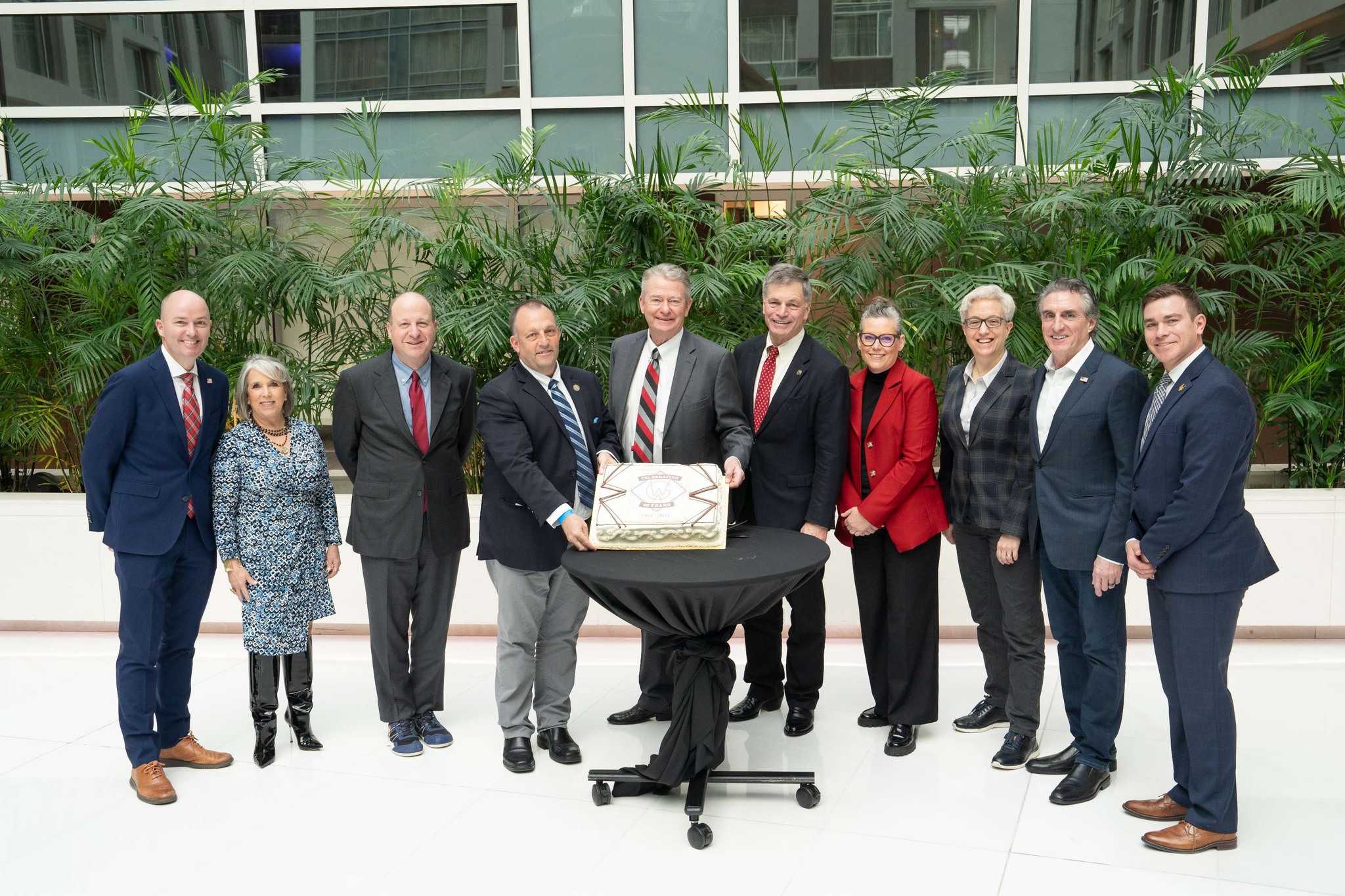
1984
—
The Western Governors’ Association is created through a merger of the Western Governors Conference and the Western Governors Policy Office during a joint meeting in Washington, D.C. in February 1984. The 19 Governors of the newly formed Assocation locate WGA's headquarters in Denver, Colorado. Hawaii Governor George Ariyoshi is elected as the Association's inaugural Chair and Colorado Governor Richard Lamb as its Vice Chair. The Association's first Annual Meeting is held in Palm Springs, California on May 20-23, 1984.

“These 16 states and 3 territories represent half of the total land area of the United States. Our governors reside in capitals as distant and diverse as Saipan, Santa Fe, Bismarck, and Juneau. Tremendous variations in climate, topography, and population. Yet the common characteristics that bind our region create unique opportunities.”
— Hawaii Governor George Ariyoshi

1989
—
The Western Governors' Association establishes a Technical Advisory Group of representatives from western states to help ensure the “safe and uneventful” shipment of radioactive waste to the Waste Isolation Pilot Plant. The first shipment of defense generated transuranic waste arrives in May 1999. Today, after over 5,000 safe shipments of transuranic waste, the facility holds up to 6.2 million cubic feet of nuclear waste. On Oct. 4, 2023, the New Mexico Environment Department issued a 10-year renewal of the operations permit.

1990
—
The Western Governors' Association publishes ‘Beyond the Mythic West.’ The book combines essays from five prominent western writers (Stewart Udall, Patricia Limerick, Charles Wilkinson, John Volkman, and William Kittredge) with the color photographs of thirteen western photographers to form a tribute to the American West. Its genesis is “founded in the desire to define the true West, the West beyond the narrow myth, the West of marvelous people and rich cultures, the West that is looking forward to the future.”

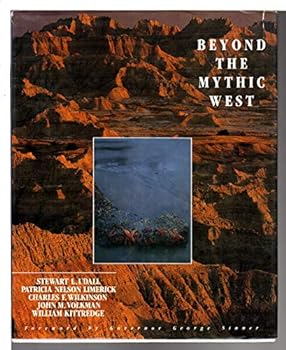
“Wallace Stegner separates the West’s history into exploiters and 'stickers' – stickers as those who came for the 'good life not the fat life' and who 'will teach the rest what life is about.' This book is dedicated to the stickers.”
— North Dakota Governor George A. Sinner

1995
—
Western Governors create the Interstate Technology and Regulatory Council (ITRC) out of the Federal Advisory Committee to Develop On-Site Innovative Technology (DOIT Committee) to “identify, evaluate, and test, new more cooperative approaches to deploying promising innovative waste remediation technologies and cleaning up federal waste sites." Today, ITRC produces documents and training that broaden and deepen technical knowledge and expedite quality regulatory decision making, while protecting human health and the environment.

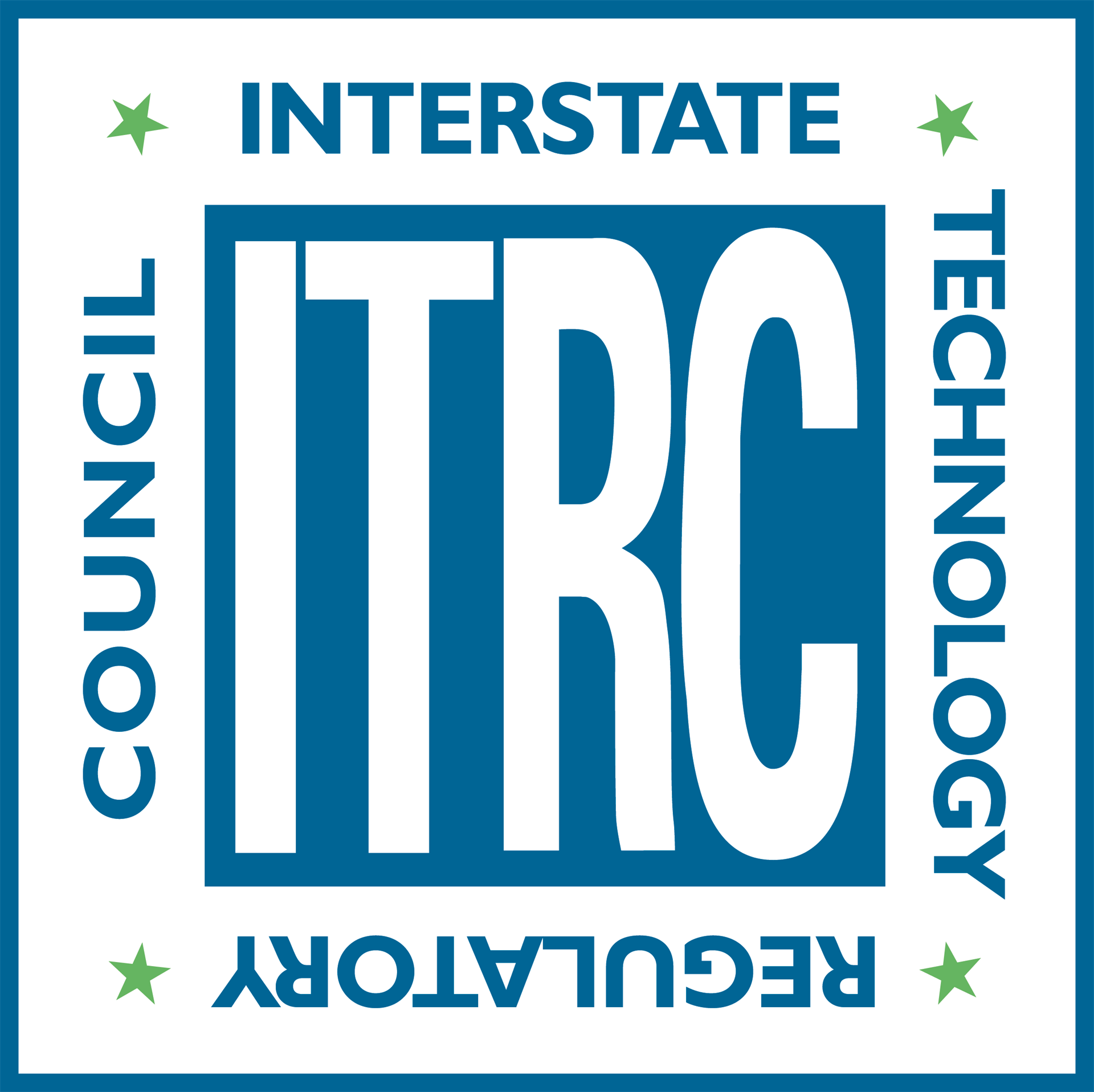

1997
—
Western Governors launch Western Governors University, one of the first internet-based education alternatives. WGU, which pioneers the innovative learning model of competency-based education, is later established as an independent entity. Today, WGU has become one of the largest universities in the country that proudly recognizes over 265,000 alumni in all 50 states and around the world. WGU is unique for its competency-based model.

“The barriers of time and place are eroding; opportunities to learn everywhere ”
— From Vision to Reality a Western Virtual University

2002
—
In August 2001 the Secretaries of Agriculture and Interior joined the Western Governors’ Association, National Association of State Foresters, National Association of Counties, and the Intertribal Timber Council endorse “A Collaborative Approach for Reducing Wildland Fire Risks to Communities and the Environment: A 10-Year Comprehensive Strategy.” The report leads to the development of the National Cohesive Wildland Fire Management Strategy in 2002 and the Wildfire Crisis Strategy in 2022.

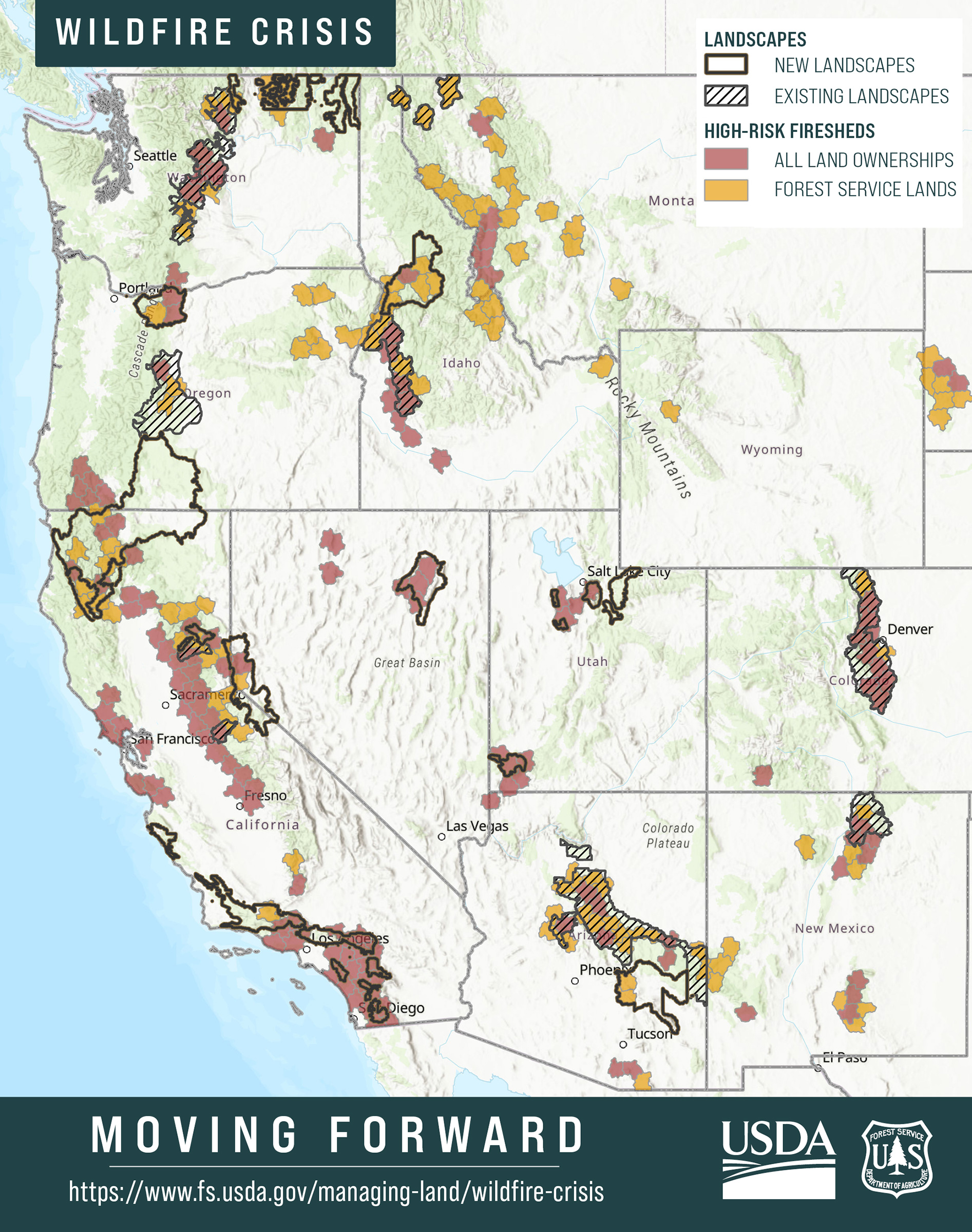

2006
—
Following WGA's formation of the Western Drought Coordination Council in 1997, Congress enacts the National Drought Policy Act in July 1998, directing the National Drought Policy Commission to create "an integrated, coordinated Federal policy designed to prepare for and respond to serious drought emergencies.” In 2003, that vision is articulated in a WGA report entitled, Creating A Drought Early Warning System for the 21st Century: The National Integrated Drought Information System. Recommendations from that report were key to the creation of the National Integrated Drought Information System (NIDIS) in 2006, which today is a multi-agency partnership that coordinates drought monitoring, forecasting, planning, and information at national, state, and local levels across the country.

“I have to point out that it's really a tip of the hat to the Western Governors’ Association, back in 1996, it sought a way to work with the federal government to prepare for and respond to droughts. And over two decades later, NIDIS now is a multi-agency partnership at the forefront of delivering drought and water information directly to your states.”
— Dr. Richard Spinrad, Under Secretary of Commerce for Oceans and Atmosphere & NOAA Administrator

2007
—
In 2007 the Western Governors’ Association launched the “Wildlife Corridors Initiative.” The initiative was a multi-state collaboration that identified key wildlife corridors and crucial wildlife habitats, and then made recommendations on how to preserve those landscapes. This work led to the creation of the Western Governors’ Wildlife Council in 2008. In 2013 it unveils the Crucial Habitat Assessment Tool (CHAT), a cooperative effort of 16 Western states that provides a high-level overview of “crucial habitat” across the West and issued guidelines to help each state prioritize habitat within its boundaries to meet its specific conservation objectives. In 2015, WGA turns over management of CHAT to the Western Association of Fish & Wildlife Agencies.
.png)

2011
—
Western Governors launch the Sage Grouse Task Force with the U.S. Bureau of Land Management to coordinate sage grouse conservation across the West. Governors Matt Mead of Wyoming and John Hickenlooper of Colorado co-chair the task force with BLM Director Bob Abbey. The Western Governors’ Association help manage the discussions that led to the 2015 decision by the U.S. Fish and Wildlife Service to not list the greater sage-grouse under the Endangered Species Act. Governor Mead said the “cooperative effort at the local level, the state level and the federal level” has allowed land managers to find “the skeleton key that opens the door for a better path on how to deal with endangered species.”

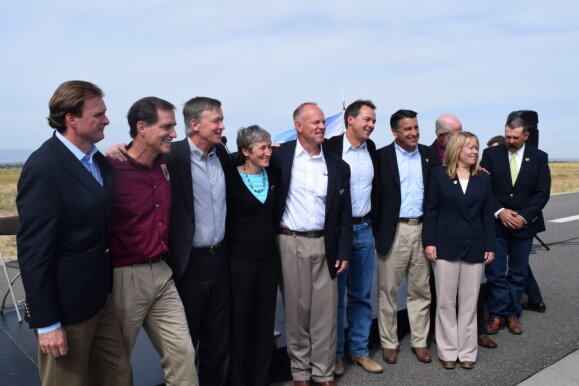
“This is truly a historic effort – one that represents extraordinary collaboration across the American West.”
— U.S. Secretary of the Interior Sally Jewell

2012
—
In conjunction with the Western States Water Council, the Sandia National Lab, and the U.S. Department of Energy, the Western Governors' Assocation launches the Water Data Exchange (WaDE) Program in 2012. Its mission is to assist WSWC member states in publicly sharing water rights, allocation, supply, and use data through a common streamlined and standardized service that enables both state and regional analyses to inform water resources planning and policies. Today, WaDE is one of the major data hubs of the Internet of Water. In addition, the WaDE Program developed a metadata dictionary with controlled vocabularies that have become the standard method for sharing state-agency water use data between WaDE and the USGS Water Use Data Research (WUDR) Program.
.png)
“WaDE’s system of water rights and water use data across 18 Western states provides invaluable insights that cannot be gained through the lens of one jurisdiction or agency alone.”
— Peter Colohan, Former Director of the Internet of Water Coalition and the Lincoln Institute of Land Policy’s Center for Geospatial Solutions

2014
—
Western Governors release the Regulatory and Permitting Information Desktop (RAPID) online toolkit in partnership with the National Renewable Energy Laboratory to tackle the challenge of transmission line siting and permitting in the West by integrating important information related to potential transmission routes and key permitting and siting requirements of federal and state agencies into one website. Today, the RAPID Toolkit has been expanded to include information about developing and permitting hydropower projects.


2018
—
The Western Governors’ Association and the U.S. Department of Agriculture signed a Memorandum of Understanding to “establish a framework to allow the Forest Service and WGA to work collaboratively to accomplish mutual goals, further common interests, and effectively respond to the increasing suite of challenges facing western landscapes.” The agreement is the first shared stewardship the USDA signed with an entity outside of the federal government.

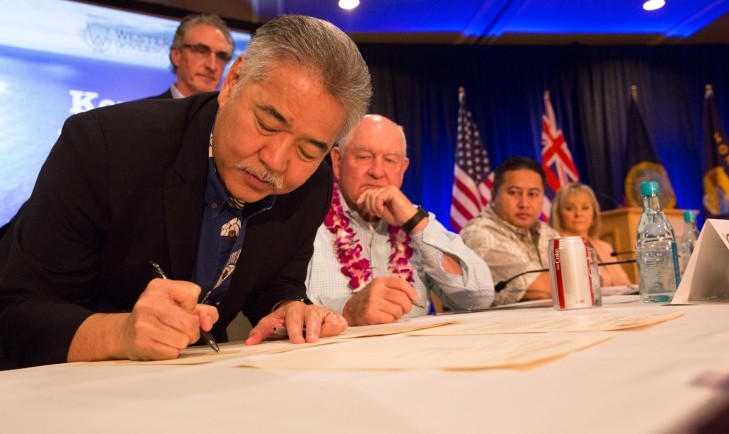
“This is an important step in cooperatively addressing land management challenges. We recognize that no one agency or level of government has the capacity to deal with all of these risks alone. This MOU puts us on a path to working closely on these serious matters.”
— Former Hawaii Governor David Ige

2019
—
Western Governors and the U.S. Department of Agriculture signed a Shared Stewardship Memorandum of Understanding to address the large-scale infestation of invasive annual grasses on western forests and rangelands. As part of the agreement, WGA launches the Western Invasive Species Council to coordinate regional efforts for controlling invasive species and releases “A Toolkit for Annual Invasive Grasses,” which helped develop a new conceptual management model known as “Defend the Core, Grow the Core."

.jpg)
“I think everyone acknowledges that there are an infinite number of invasive species and a limited amount of resources. To make those resources go further, you have to improve coordination.”
— Justin Bush, former Executive Coordinator of the Washington Invasive Species Council

2020
—
At the culmination of former Oregon Governor Kate Brown's WGA Chair Initiative, The Electric Vehicle Roadmap, nine western Governors (Arizona, California, Colorado, Idaho, Nevada, New Mexico, Oregon Utah, and Washington) signed an MOU “to pursue opportunities, among interested states, to standardize technical specifications between existing sub-regional state electric vehicles collaboratives and produce an expanded regional agreement on electric vehicle infrastructure deployment.
“By tackling early adoption of EVs and EV infrastructure, the West can do its fair share in tackling climate change. And there's great economic benefits to doing so.”
— Oregon Governor Kate Brown

2022
—
The Governors and the U.S. Department of Agriculture sign a Shared Stewardship Memorandum of Understanding to create the Task Force on Collaborative Conservation. The Task Force serves as a forum for federal, state, and territorial representatives to collaboratively respond to the land, water and wildlife challenges facing western landscapes through shared expertise and dialogue, strategic resource and capacity coordination, information and data sharing, and joint problem-solving.

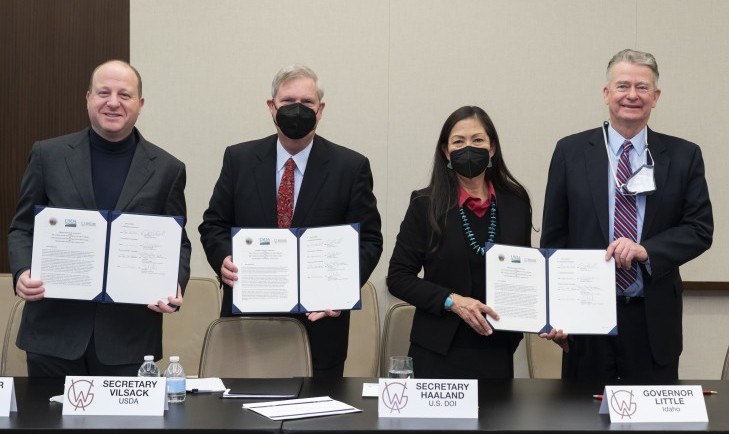
“As western communities grapple with environmental challenges exacerbated by climate change, such as increasing drought and more frequent and intense wildfires, bolstering effective collaboration between the federal government, states and territories to respond to these issues is imperative.”
— Secretary of Agriculture, Tom Vilsack

2024
—
To celebrate the 40th Anniversary of WGA's founding on February 24, the WGA policy team joined nine Western Governors in Washington D.C. for WGA's Annual Cabinet Breakfast with U.S. Secretary of Health and Human Services Xavier Becerra, Administrator of the Small Business Administration Isabella Casilla Guzman, and U.S. Secretary of Veterans Affairs Dennis McDonough. While they were in the nation's capital, WGA's staff also met with 19 Senate offices from 11 western states.
